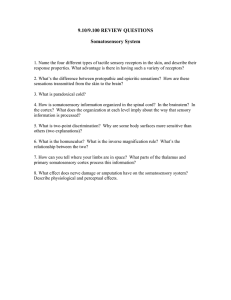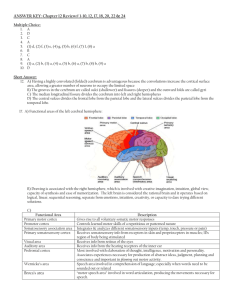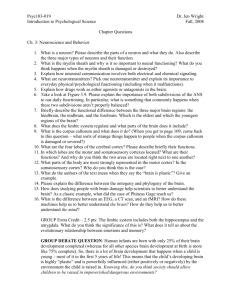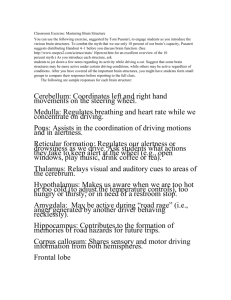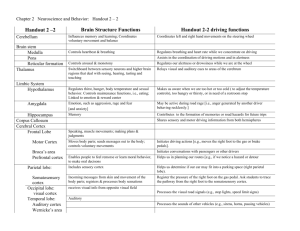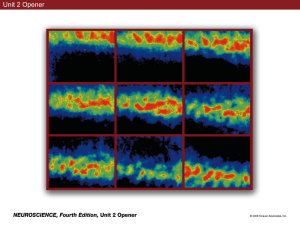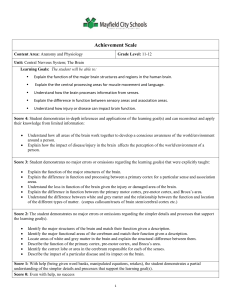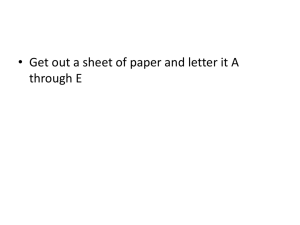somatosensory area i
advertisement
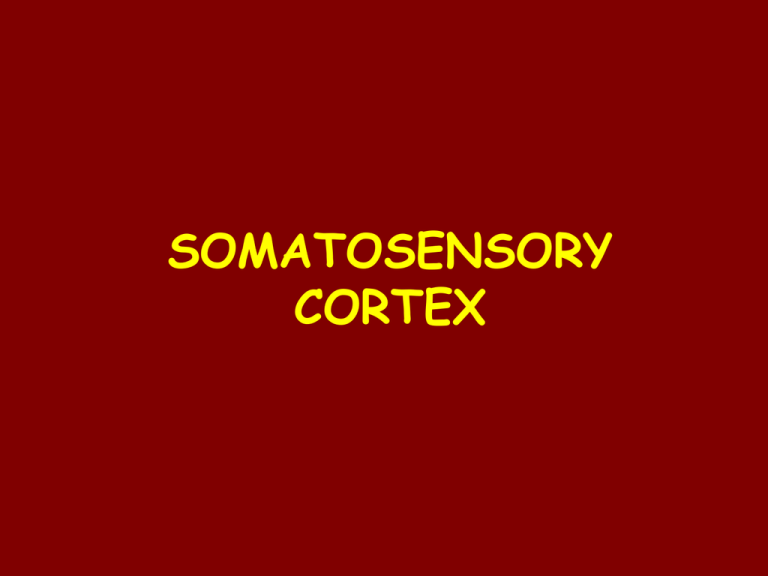
SOMATOSENSORY CORTEX Learning Objectives • SOMATOSENSORY CORTEX • Homunculus • SOMATOSENSORY AREA I • SOMATOSENSORY AREA II • Somatosensory association area Cerebral Cortex • Brodmann’s areas • Fifty • Histological ---- Functional • General Scheme – Central fissure – Sensory signals from all modalities - Posterior – Anterior half parietal Lobe – Somatosensory signals – Reception and Interpretation – Posterior half – Still higher levels of interpretation Posterior half of frontal Lobe Muscle contraction & Body movements Sensory signals from all modalities - Posterior Anterior half parietal Lobe – somatosensory signals – reception and interpretation Auditory signals Temporal Lobe Visual signalsOccipital Lobe Somatosensory cortex SOMATOSENSORY AREA I SOMATOSENSORY AREA II • Post central gyrus cerebral cortex • High degree of localization • Extensive and more studied - more important • Areas 3,1,2 • Poor localization • Less studied • Signals enters here: – From brainstem – From somatosensory cortex – From visual area – From auditory area Receive information from opposite side of body Structural layers of cerebral cortex I Molecular II Ext Granular III Small Pyramidal cells IV Int Granular cells V Large Pyramidal Cells VI Fusiform/Polymorphic cells layer • Incoming signal excite neuronal Layer IV • Layers I and II receive diffuse, nonspecific input signals from lower brain centers • The neurons in Layers II and III send axons the cerebral cortex • Layer V - Generally larger and project to more distant areas, such as to the basal ganglia, brain stem and spinal cord. • Layer VI, especially large numbers of axons extend to the thalamus, providing signals from the cerebral cortex Functions of somatosensory area I 1. Localize discretely - different sensations 2. Critical degrees of pressure 3. Weights of objects 4. Shape or form of objects -- Stereognosis 5. Texture of objects 6. Localize pain and temperature sensations Somatosensory association area • Brodmann’s area 5 and 7 • Parietal cortex - behind somatosensory area I • Decipher sensory information entering somatosensory area I • Receives signals from: – Somatosensory area I – Ventrobasal nuclei of thalamus – Other nuclei of thalamus – Visual and auditory cortices Effect of removing somatosensory association area Unable to recognize complex objects/complex forms by feeling them on opposite side Loses sense of form of his/her own body / body parts on opposite side Oblivious to opposite side Forgets to use opposite side for motor functions Tends to recognize one side of object and forgets other side - Amorphosynthesis
